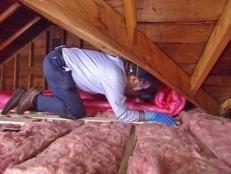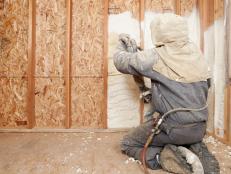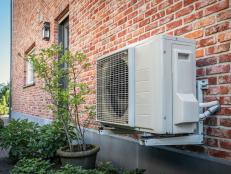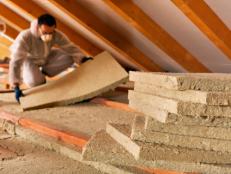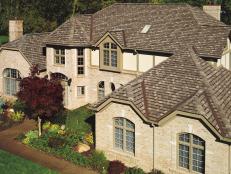The Benefits of Green Roofs
A green roof is a functional roof for a home or other building that substitutes plants for conventional roof coverings such as tile, shingles and cedar shakes. Also known as "ecoroofs," green roofs comprise five basic layers: the roof deck, a waterproof membrane, soil-filter fabric, several inches of lightweight soil mix and drought-tolerant plants. Green roofs have been popular for decades in many European cities, especially in Germany, and are gaining popularity in the United States. Hundreds of varieties of plants will thrive on ecoroofs, and experts agree that any home can be built or retrofitted with a green roof.
Green roofs can be categorized into two types, extensive and intensive. An extensive green roof is very low-profile; it's simply a functional green roof designed for limited access by the homeowner. It typically has a 3-inch-deep soil mixture and is therefore less expensive and lighter than other green roofs. Plant variety is limited, mostly to cut down on maintenance requirements. Sedums, a low-growing ground cover with water-storing leaves, are popular for extensive green roofs.
An intensive green roof is more high-profile and resembles a roof garden because it has a much wider variety of plants. All vegetation is planted directly into the soil mixture that makes up the rooftop. The soil mixture is at least 8 inches deep and can be as deep as 15 feet, depending on the architectural and plant features the homeowner wants. Intensive green roofs are designed as an additional outdoor living space for the homeowner.
Regardless of the type of roof, the loading capacity must be engineered specifically for the desired end product. Every home and project is unique.
Benefits
Green roofs provide a host of health and economic benefits for the homeowner, the community and the environment:
- Reduced heating and cooling costs. A green roof acts as a superinsulator, enabling the home to hold in more heat during the winter and keep out the heat during the summer. German studies show that green roofs help a home retain up to 50 percent of the heat typically lost to convection. A Canadian study found that a green roof reduces the average daily energy demand for air conditioning by up to 75 percent in the spring and summer.
- Extended life of roofing materials. The soil mixture and the plants protect the waterproof membrane and decking from sunlight and temperature extremes more effectively than conventional shingles, tiles or shakes. This enables the roofing substrates to last longer—on average two to three times longer—than those made with conventional materials.
- Reduced noise-pollution impact. The plant materials and soil mixture of a green roof absorb and deflect noise outside the home.
- Beauty and biodiversity. Green roofs are simply more beautiful to look at than conventional roofs, and intensive green roofs provide additional outdoor living space for homeowners. Green roofs also fill a void left by home construction, providing food and shelter for native birds and insects, which is especially important in urban and suburban areas.
- Diminished rainwater runoff. A green roof acts like a sponge during rainstorms, absorbing about 40 percent of the rainwater. The plants, soil and root system then filter out many of the pollutants the rainwater has pulled from the air, making the eventual runoff much cleaner. Further, green roofs delay the flow of rainwater into the municipal sewer system by about 45 minutes, which helps overburdened sewer systems cope with sometimes-large amounts of rainwater.
- Less carbon dioxide and more oxygen in the air. More plants equal cleaner air because plants actually collect carbon dioxide from the air and, as a byproduct of photosynthesis, replenish the air with oxygen. The plants on a residential green roof produce more oxygen than a typical family uses in a year.
- Diminished "urban heat island effect." The urban (and suburban) heat island effect is the increase in temperature in developed areas that results from removing vegetation to build hardscapes such as homes, shops and parking lots. The temperature increase elevates smog levels, exacerbates medical problems associated with heat stress and increases energy demand for cooling.






